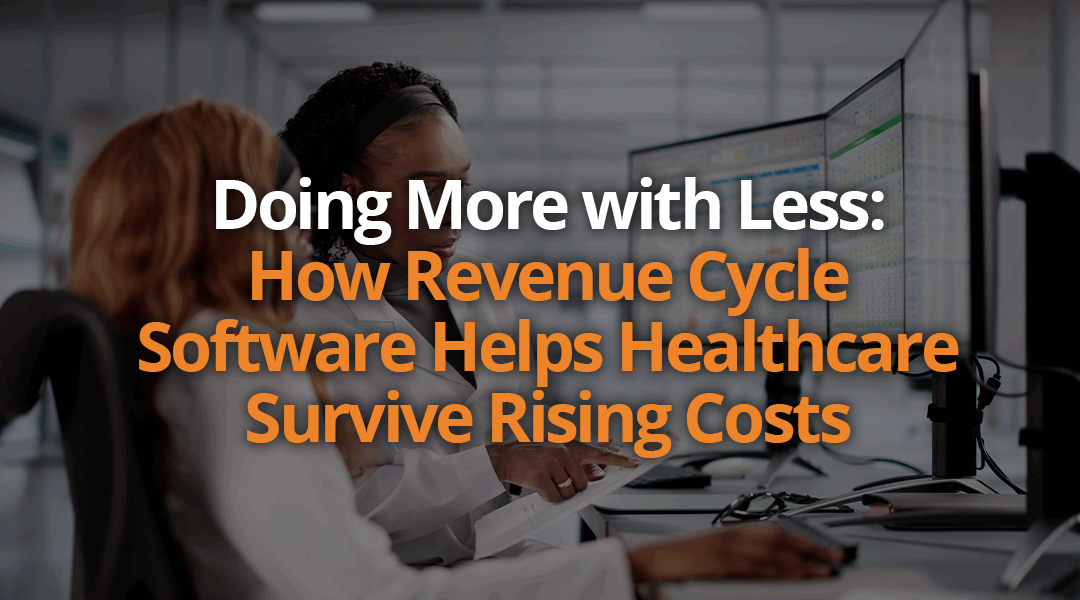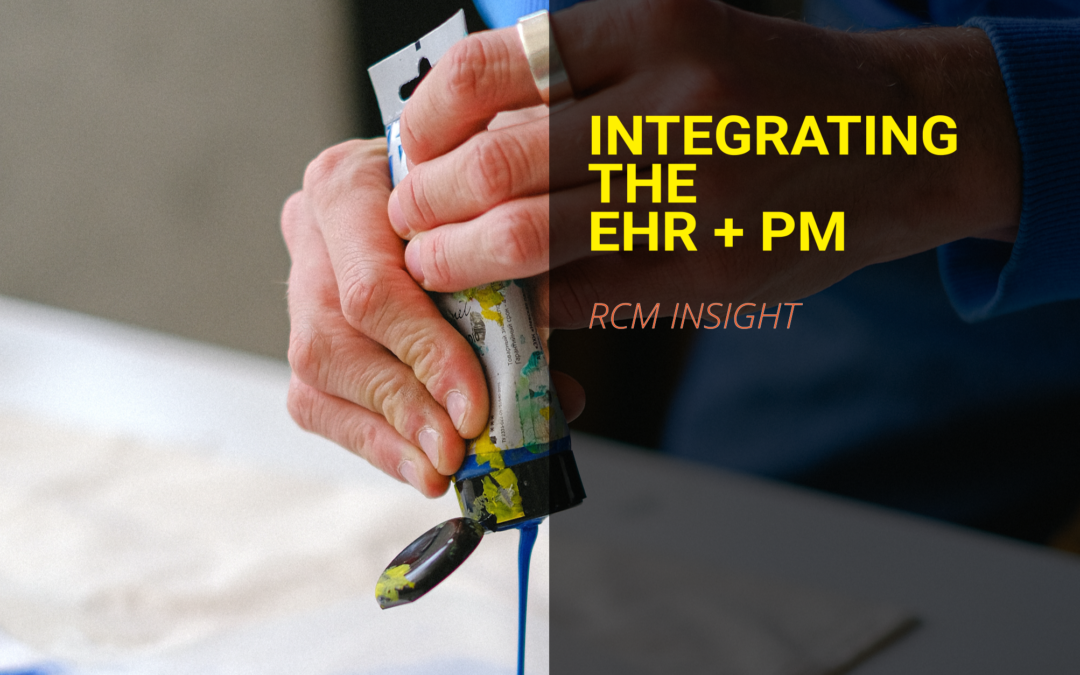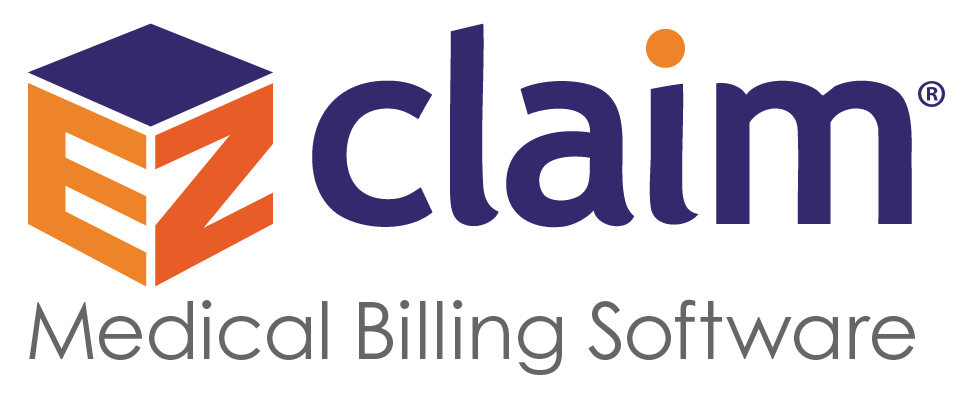
Aug 21, 2025 | Blog, Medical Billing Software Customer Service, RCM, RCM Insight, Revenue
Rising operational costs, staff shortages, and ever-changing billing requirements make it harder than ever for healthcare practices to stay profitable. Trying to get by with outdated revenue cycle software often highlights inefficiencies in billing processes, leading to slower payments, lost revenue, and frustrated staff.
In an environment where every dollar and every minute matters, you can’t afford to work harder just to keep up. By automating repetitive tasks with revenue cycle software by EZClaim, you can improve claim accuracy and gain clear visibility into your cash flow.
In this article, you’ll discover seven actionable strategies to reduce costs, improve efficiency, and do more with less,all while improving patient care.
Why Doing More with Less Is the New Healthcare Reality
Staffing, technology, and compliance costs continue to rise, while reimbursement rates remain unchanged. Many practices are expected to maintain or grow patient volume with fewer resources, leaving teams stretched thin and at risk for burnout.
Revenue cycle software helps close that gap. By streamlining billing, automating repetitive tasks, and reducing errors, you can work more efficiently and hold onto revenue without adding staff or taking away from patient care.
RCM Strategies to Cut Costs and Boost Efficiency
Strategy 1: Automate Billing Workflows to Save Time
Manual billing takes hours and leaves too much room for human error. With automation, tasks like data entry, claim submissions, and follow-ups happen instantly in the background. You process claims faster, remove bottlenecks, and free your team to focus on higher-value work.
Strategy 2: Improve Claims Accuracy to Reduce Denials
Rejected claims slow your cash flow and pile on extra work. Revenue cycle software flags missing details, verifies codes, and checks compliance before submission. The result is a higher first-pass acceptance rate and more predictable revenue.
Strategy 3: Streamline Scheduling and Patient Communication
Missed appointments and scheduling errors cost you money. With integrated scheduling tools, you can send automated reminders, enable online booking, and update calendars in real time. Patients will show up more consistently, and you can make sure every provider’s schedule is optimized.
Strategy 4: Centralize Reporting for Smarter Decisions
When your data lives in multiple systems, it’s hard to see the full picture. Centralized dashboards, on the other hand, show key metrics at a glance. You can spot problems early and make decisions that protect your bottom line.
Strategy 5: Optimize Payment Processing for Faster Collections
Patients want simple, digital payment options. With a system that has secure, built-in payment processing, they can pay their balances quickly and easily, while you improve cash flow and deliver a better patient experience.
Strategy 6: Integrate Medical Billing with Other Systems
Double-entry multiplies the time spent and chances of error when completing forms. If you have an all-in-one system that connects billing with EMRs, scheduling, and patient portals, you’ll be able to simplify workflows and make sure information is correct across the board.
Strategy 7: Use Analytics to Identify Revenue Opportunities
Analytics can reveal patterns in denied claims, slow-paying accounts, or underused codes—all of which are missed revenue opportunities. Once you identify those patterns, you can make proactive adjustments that bridge the gap.
How EZClaim’s Revenue Cycle Software Puts These Strategies Into Action
EZClaim brings all your core RCM tools into one place, so you don’t waste time jumping between systems. Its cloud-based design is flexible and scalable enough to be used by solo providers and multi-location practices across a wide range of specialties.
The interface is simple to navigate, with customizable reporting options that give you the data you need to track performance, identify issues, and act quickly.
Explore EZClaim’s Features & Pricing to see how you can do more with less.
Thriving in Today’s Healthcare Economy: Take the Next Step
Navigating rising costs with limited resources isn’t an easy problem to solve, but developing smarter processes can help you stay ahead. With the right revenue cycle software, you can eliminate inefficiencies, improve claims accuracy, and grow revenue without adding to your staffing burden.
EZClaim is the partner that makes it possible. Our all-in-one platform is built to help healthcare practices like yours work smarter, not harder. Schedule your free consultation today and see how EZClaim can help you thrive in today’s healthcare economy.
Frequently Asked Questions
What is revenue cycle software, and how does it work?
Revenue cycle software helps healthcare practices manage billing, claims, and payments more efficiently by automating tasks and improving accuracy.
Can revenue cycle software really reduce operational costs?
Yes, by reducing manual work, improving claims acceptance rates, and streamlining processes, practices save time and money.
Is EZClaim’s revenue cycle software suitable for my specialty?
EZClaim is designed for a wide range of specialties, from general practice to therapy, surgical, vision, and more.

Jun 24, 2021 | Partner, RCM Insight
Have you ever been a bit overwhelmed when shopping around for all your medical practice needs? Of course! There are so many pieces required to meet all the HIPAA and reporting requirements, but it’s also about efficiency and ease of sharing information between clinicians to administrators. This can make the all-in-one Electronic Health Record (EHR) and Practice Management (PM) systems very tempting. Keep in mind, you will pay a hefty price for an all-in-one, which makes this a very simple decision for some practices. The good news: You have alternatives that still provide the same ease of sharing data through integration. I recently interviewed Dan Loch, President of EZClaim Software, LLC. EZClaim offers a stand-alone billing platform that offers several options for integration with clearinghouses and EHR’s. I asked Dan what he felt the biggest advantages were to using stand-along programs.
-
- Your practice will get the best of both worlds! Often practices will find a great EHR, but the billing side is not the best, or vice-versa. Using stand-alone programs that can talk to each other allows a practice to choose an EHR solution that is best for their clinicians AND a PM solution that is best for the billers and administrators.
- Typically, stand-alone systems are more ‘nimble’ in responding to industry and regulatory changes.
- Integrating multiple ‘best-in-class’ software packages creates an offering with much more in-depth capability.
If you are currently using separate EHR and PM solutions but the programs are not integrated – consider looking into this feature. This will relieve the burden of entering data twice. Start by verifying if the programs have an existing integration.
-
- If so, the hard part is done! Just ask what the process is to get set up and if there are any fees associated.
- If not, consider contacting your PM software vendor to inquire what formats they accept for EHR integrations. Once they provide the specs, work with your EHR to determine if you can export in the required format.
There is no single solution that works for every practice. If you’d like to learn more, check out this article from EZClaim ‘All-in-One’ or ‘Specialized’ Medical Billing Software? Which is Best? I hope that this information will help you weigh your options and find the right fit for your specific situation. If you have questions or would like some help determining what would be best, RCM Insight is here to help! Visit us at www.rcminsight.com and submit a request to chat on the Contact Us page.

May 18, 2021 | Denied Claims, RCM Insight
Last month we looked at tools for getting clean claims out the door on the first try. Many billers or practices stop monitoring claims once the leave the practice management program, but this is where you are likely losing money. The unfortunate truth is you need to use the tools available to you to catch rejected and denied claims to ensure proper and timely payment. Today we will look at rejections and denials, and the resources you have (or need) to work efficiently.
The terms rejection and denial are used interchangeably in the billing world but they have distinct differences, including how you are notified. Let’s start with defining the differences.
Rejected Claims
- Claims can be rejected by the clearinghouse OR the payer
- Rejections are based on submission guidelines
- Rejected claims have not been entered into your payers system for adjudication
- Notified through a claim status report (ANSI 277) that comes back into most practice management programs from the clearinghouse
- Corrections do not require a resubmission code
Denied Claims
- Claims are denied by your payer
- Denials are based on policy coverage
- Denials have been accepted for adjudication and deemed unpayable
- Notified on remittance advice (ANSI 835/ERA)
- Payers may require a resubmission code and original reference number when submitting a corrected claim
If you are using a clearinghouse and receiving your claim status reports electronically, you will be notified quickly about rejected claims. There are two ‘checkpoints’ that will look for errors. The first is your clearinghouse, the second is the payer.
At each checkpoint claims will be Rejected or Accepted, these status updates come to you through a claim status report. If your practice management system is able to process these reports (ANSI 277) your claims will be updated with the accepted or rejected information you will be able to correct any rejected claims within your practice management system. When you see an error, start with checking who has rejected your claim. This will be the point of contact if you have questions about the rejection or how to correct it. If you are not already, make it a daily task to get your reports, correct any rejected claims, and resubmit those claims.
When a claim has been accepted by your clearinghouse and the payer it enters the adjudication system. This is where the payer will make a determination on payment based on the members coverage and your contract. The denials will appear on your remittance advice with a payment or as a zero dollar payment, indicating that they have reviewed your claim and they have determined no payment is applicable. If you are enrolled with you payer for electronic remittance advice (ERA) this file will come electronically and your practice management system will be able to list or identify denied claims. These claims will either need to be researched further for clarification on the denial or written off. It is vital that your practice management system can handle these scenarios appropriately so you do not lose money for payable services.
This is another scenario where technology can seem scary. However, efficiently monitoring and working is well worth the learning curve. If you are already sending electronically and not using the claim status report or electronic remittance advice – coordinate with your clearinghouse and practice management system to find out how these reports can save you time and money.
If you would like more information on creating workflows for rejections, denials, or enrolling with a clearinghouse, let RCM Insight help! Visit us at www.rcminsight.com to request a consultation.
[Contribution by Stephanie Cremeans with RCM Insight]

Apr 5, 2021 | Claim Status Inquiry, Claims, Denied Claims, RCM Insight
If a medical billing program has “scrubbing,” why did my medical billing claim still get denied? It is a common question that we are going to answer today.
First, let’s get a better understanding of the words we are talking about. In the medical billing world, validation and scrubbing tend to be used interchangeably. While they are similar – they are not actually the same. Understanding what you have and what you need will help you submit ‘clean’ claims.
According to Technopedia, data validation checks for the integrity and validity of data and ensures the data complies with the requirements. So, what requirements? Often people assume that this means payer requirements, but that is typically not standard. Validation rules are built into your practice management software and can be used for several points. Following are some common rules you may find in your program:
- Ensure NPI‘s and Tax IDs are the appropriate lengths
- Ensure patients date of birth is entered
- Ensure that a procedure code and place of service are present on each claim
While these scenarios are standard across the industry, there may be other situations that a validation rule can help. Some programs will allow you to create custom rules for your practice. A customized validation rule will allow you to create a rule for a payer requirement. For instance, you could create a rule to prevent the following:
- Do you have a code that always requires a modifier, but only for a specific payer?
- Work with pediatrics and always need the ‘relationship to insured’ to read something other than self
- How about insurance ID numbers that are a specific alpha-numeric combo, like 3 letters followed by 9 digits?
Keep in mind, if you are creating validation rules the program will make sure that the criteria are met based on the rule entered into your software. When creating custom rules, it is important to note that this will not verify payer billing guidelines. You will need to obtain information directly from your payer to create a rule that coincides with their policies.
Once any validation errors have been addressed your claims will go to the clearinghouse you are working with. Most clearinghouses offer claim scrubbing for an additional fee. Technopedia defines data scrubbing as the procedure of identifying and then modifying or removing incomplete, incorrect, inaccurately formatted, or repeated data.
Claim scrubbing is available in several ways. It may be used within your practice management system, your clearinghouse, or even a third-party vendor. Claim scrubbing services can vary greatly in what they are looking for.
Once the claim has left your practice management system it will likely go through at least 2 scrubbing programs—one with the clearinghouse and one with your payer, prior to accepting the claim for processing. When claims are found to have an error, these results are sent back through a Claim Status Report (ANSI 277 file or a human-readable text file). This report will include information about why the claim cannot be processed. This report will also indicate whether it is the clearinghouse or the payer that is rejecting the claim. If you have further questions about the rejection, you will need to contact the entity that has rejected it.
Checking the Claim Status Reports on a regular basis will help you correct the errors and resubmit in a timely manner. In addition, the information you have gathered from the rejections can be used to update internal processes or create customized validation rules to prevent future rejections for the same error–saving you time and money!
RCM Insight is a medical billing company that uses EZClaim’s medical billing software. For any details that have to do with claims validation and “scrubbing,” contact RCM Insight directly.
ABOUT EZCLAIM:
EZClaim is a medical billing and scheduling software company that provides a best-in-class product, with correspondingly exceptional service and support. Combined, they help improve medical billing revenues. To learn more, visit EZClaim’s website, e-mail them, or call them today at 877.650.0904.
[ Contribution by Stephanie Cremean’s with RCM Insights ]





